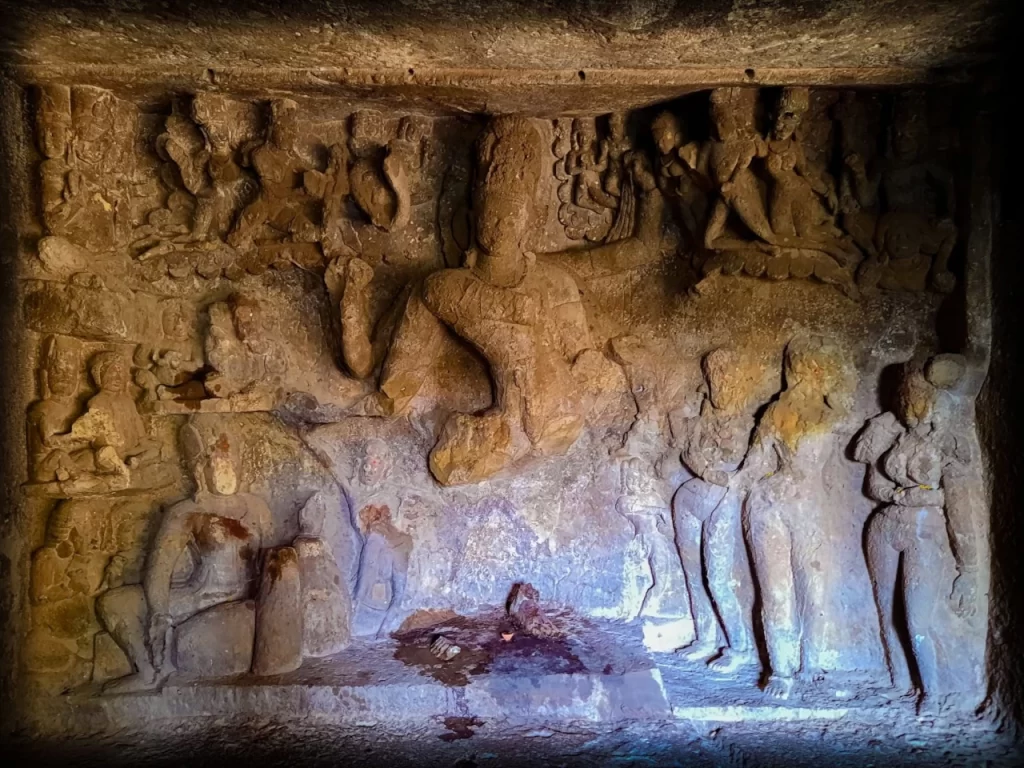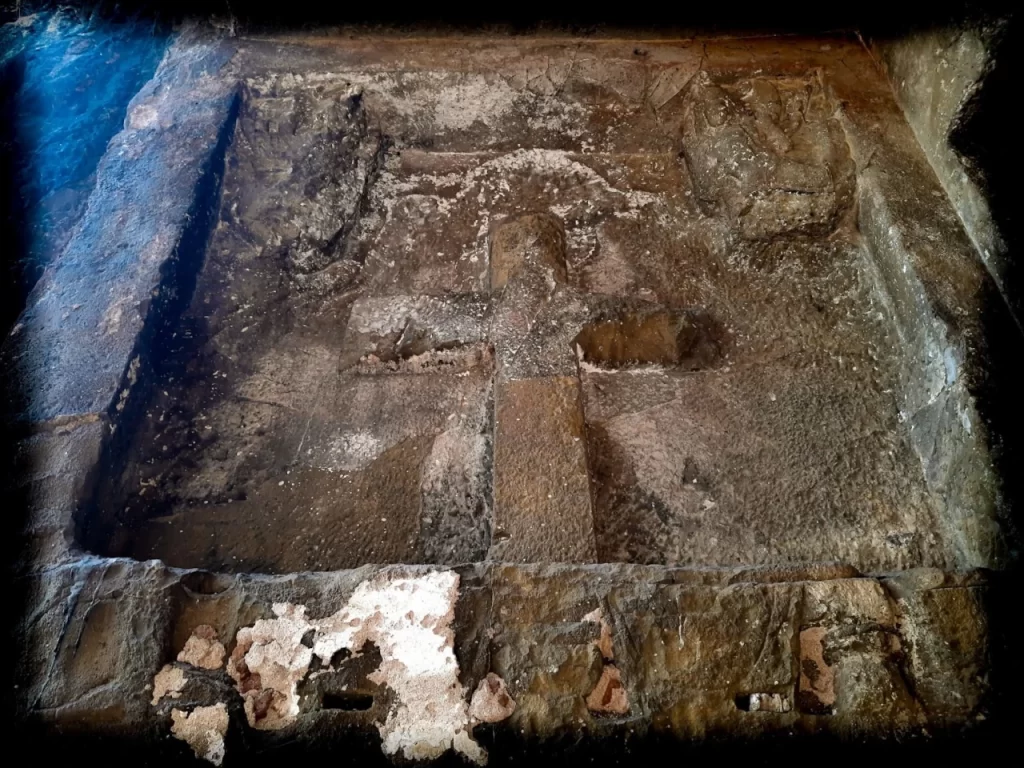The Mandapeshwar Caves, nestled in the serene suburb of Borivali, is a hidden gem behind an open plot of land just behind the “Our Lady of Immaculate Conception Church.”The caves were established about the same time as the adjacent Jogeshwari Caves and the Mahakali Caves, circa 550 AD. The neighbourhood’s name was derived from this temple. Mount Poinsur, where Saint Francis D’Assisi High School is located, is believed to be an alteration of “Mandapeshwar.” Mandapeshwar, which means ‘Hall of the Lord’, has transformed from a Buddhist Math into a Hindu temple, a church, and now a Hindu place of worship.
Originally constructed on the banks of the nearby Dahisar River, the caverns have separated from the river over time due to a course change. Despite this, the Mandapeshwar Caves remain a testament to ancient India’s rich cultural legacy and architectural prowess, drawing visitors worldwide to admire their intricate carvings and breathtaking natural beauty.
The Portuguese gave the Mandapeshwar Caves importance because they were located en route to Thane. The sea caverns of Elephanta (Gharapuri) were used as a military camp by the Portuguese, who did not convert the caves. There, their soldiers would practise shooting at sculptures. Additionally, they used one of the caverns as a cowshed. At that time, the Jogeshweri caves were utilised by the Shivaits and had not been converted into a church. From Gharapuri and Mandaleshwar, Pashupat Shaivism was on the decline.
Mandapeshwar, unlike Jogeshweri, was used to house invading armies, common people, and refugees before the advent of the Portuguese. There is no evidence that the caverns were used for religious purposes when it was converted into a church. There are indications that the Church solicited contributions or grants from neighbouring communities. However, this information needs verification since approximately thirty congregations were alone in Mumbai. Another aspect is that since there was a missionary church in the immediate vicinity, the Mandapeshwar churchl may have been for Garrison worship activities.
Then almost all religious activities took place around trade routes. Trade routes played a significant role in introducing and growing Buddhism, Pashupat Shiavism and even other sampradayas.

Originating in Gujarat near Bharuch, Pashupatism travelled through the trade route. From Bharuch to Padal (Kandivali), then spread to Borivali, Jogeshwari, Gharapuri, and Parel.
In 1804, a visitor reported that the carved Hindu figurines in the cave had been plastered over.
However, the Marathas defeated the Portuguese in the 18th century and restored it to the status of a temple. The rock-cut sculptures were rediscovered and venerated. When the British defeated the Marathas at the end of the century, they realised the significance of the caverns for Indian religions and constructed a church above them.
After India’s independence, the church fell into disrepair, and the caves gradually reverted to their function as a site of worship for Lord Shiva. The church has been demolished, but older inhabitants recall playing in the aisles and nave as children.
Layered history
The architectural sculptures of the Nataraja and the headless Nandi carved in front of the central cave are remarkably similar to those at the Elephanta and Jogeshwari caves. Some historians have interpreted the Nataraja panel as depicting the wedding of Shiva and Parvati. Another panel contains a niche surrounded by sculptures of various devotees, suggesting the presence of Lakulisha. Lakulisha is regarded as the 28th and final incarnation of Shiva and the proponent of the Yoga system, according to a tradition stated in the Linga Purana.
Despite the resumption of active worship at the caves, it has a cross carved on the left side of the cave entrance. Nonetheless, visitors can still marvel at the intricate carvings and sculptures, which offer a glimpse into the religious practices of ancient India.

According to colonial records, the caves were converted into a church with plaster-coated pillars and paintings of saints adorning the walls. A wall was constructed to cover the Hindu sculptures, and the Bombay Gazetteer records confirm that the caves were used as a church, complete with a wooden image of Mother Mary. After the Marathas took over Bassein (current Vasai) in 1739, the caves were restored to Hindu worship. The area above the caves was used for Catholic worship after the British takeover of the Maratha territories in the early 19th century but fell into disrepair until being restored in 1888. The renovations continued until 1912 when the church got its first vicar.
Beyond the church, on the mount behind St. Francis school, stands another overlooked structure – the Marian Sacromonte. This conical building was built in the 16th century, with a statue of Jesus at its pinnacle and seven niches carved inside. Although some have misidentified it as the Watchtower, it is a church and part of a complex that houses the Monastorial Cemetery. The scale and history of these structures make them a must-see destination for anyone interested in Mumbai’s layered religious and cultural history.
